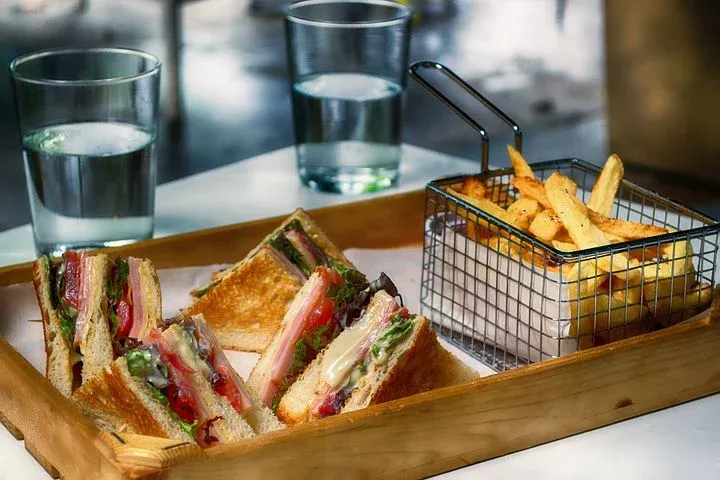NUTRITION IN ANIMAL- PART 1 - CARBOHYDRATES
Types of nutrition
All organisms need food to provide energy, growth and for other life processes. Green plants Synthesise their own food by photosynthesis, using light as an energy source. This is called autotrophic
nutrition. Animals (including humans) and many other organisms show heterotrophic nutrition. There are different types of heterotrophic nutrition. However, they all involve large complex organic molecules being broken down, or digested, to give simpler substances. These simpler substances can be used to build up the larger molecules that the organism requires. Humans eat plants, other animals or both. The food that is ingested (taken into the body) is broken down in the gut into smaller soluble molecules, which are then absorbed into the blood. Digestive enzymes speed up the process of digestion. Heterotrophic organisms depend directly or indirectly upon autotrophs such as green plants as a source of organic molecules. There are four types of heterotrophic nutrition.
. Holozoic nutrition involves digesting food inside the body using enzymes inside the body. The digested food is used within the cells of the organism.
. Saprobiontic (saprophytic) nutrition is where an organism feeds on dead organic matter. Digestion takes place outside the body of the organism. Decomposers, such as fungi and many bacteria, are saprobiontic.
. Parasitic nutrition is where one organism (the parasite) obtains food from the body of another living organism (the host), for example tapeworms and fleas.
. Mutualistic nutrition involves a relationship between organisms of two different species, where both gain a nutritional benefit, for example nitrogen-fixing bacteria in the root nodules of leguminous plants.
How energy from food is used
There are a number of lite processes that require a supply of energy gained from food.
. Synthesis of molecules When the body. For example, protein synthesis needs energy to makes substances, it needs a source of energy assemble the amino acids into polypeptide chaains
.Active transport Energy is needed to pump ions or molecules against a concentration gradient For example, the cell membrane has a sodium pums that transports sodium ions from a low to a high concentration.
. Muscle contraction Energy from food is used up when muscle fibres contract. The contractions move bones, the heart and other organs.
. Transmission of nerve impulses Active transport using ion pumps is involved in the formation of a nerve impulse. Energy is needed to transfer the impulse across a synapse.
. Maintenance of body temperature Endothermic animals such as mammals and birds maintain a constant body temperature using energy supplied from their food.
. Bioluminescence A number of different species of organisms generate light using energy supplied by food. For example. glow-worms, iretlies, and some species of bacteria.
There are a number of different types of food substances which organisms use to supply themselves with energy. Food substances also supply the building material needed to make new cells. Many of the foods you like to eat contain several of these different substances.
Carbohydrates
These include sugars and starchy toods, such as sweet potatoes and rice. Carbohydrates are the main source of energy in the diet. Starch and disaccharide sugars are broken down into monosaccharides, particularly into the hexose sugar glucose. Glucose is the main Repiratory substrate. Although not digested polysaccharide cellulose is also an important component of the diet. It provides the main type of fibre, certain levels of which are necessary health. Apart from nbre, no specific types of carbohydrate are essential in the diet, as long as you have enough carbohydrate in your diet to meet the overall energy requirements of your body.
Tne basic structure of all carbohydrates is the same. Carbohydrates are made up of carbon and oxygen. They fall into three main types, depending on the complexity of the molecules: monosaccharides, disaccharides and polysaccharides.
Starch is one of the best known polysaccharides. It is particularly important as an energy store in
plants. lhe sugars produced by photosynthesis are rapidly converted to starch. Plant storage organs, such as potatoes, are particularly rich sources of starch.
Glycogen is sometimes referred to as animal starch. It is the only carbohydrate energy store found in animals. It is found mainly in muscle and in liver tissue, which is very active and needs a readily available energy supply at all times. Cellulose is an important structural material in plants. As you have seen cellulose is the main
constituent in plant cell walls. Just like starch and glycogen it consists of long chains of glucose - but in this case the glucose molecules are held together
in a slightly different way. This is very important, because human beings, and most other animals, cannot break down these linkages and so they cannot digest cellulose. So carbohydrates, from the simple sounding combination of carbon, hydrogen and oxygen, form a very varied group of molecules whose functions are vital to most living processes.
There are a number of chemical tests for the presence of carbohydrates of different types. One test is the iodine test for starch. Reddish-brown iodine solution turns blue-black in the presence
of starch.
Some sugars react readily with Fehlings solutions or Benedict's solution. They reduce copper (II) ions to copper (I) ions and for this reason they are known as reducing sugars. So there is a straightforward chemical test for the reducing sugars. The reducing sugars include all of the monosaccharides and some of the disaccharides. Fehling's solutions were used traditionally to test for reducing sugars it involved adding
Fehling's 1 and Fehling's 2 solutions to your test substance and heating. However, Benedict's solution is now almost always used. It uses the same basic chemistry, but it is simpler as it uses only one solution.
I AM MANDATE
